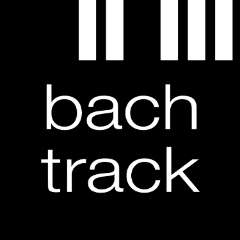Puccini's Tosca is one of the stalwarts of the repertoire, with its soaring music and a showstopping number in each act: the evil Scarpia expounding his wicked plans to the background of the Te Deum, Tosca's Vissi d'arte awakening to the harsh world around her and Cavaradossi's lament on death row E lucevan le stelle in Act III. But it rarely comes across as a piece of drama: it's too easy either to hideously overact it or to simply wallow in the gorgeous music and not act it at all. Catherine Malfitano's production for the ENO avoided both of these traps and was refreshingly dramatic. The first act, in which Cavaradossi desperately tries to juggle his duties to his beloved but hyper-jealous lover while saving the life of the fugitive Angelotti, was acted and sung superbly. The drama, the tension and the black humour of the dangers caused by Tosca's ignorant flightiness were vivid.
The scene had been set for me by reading the excellent programme notes, which gave the clearest of material about the political background of the story (and much besides). Much of the dialogue makes a whole lot more sense when you understand that the Italy of the day was riven between two sides: the party of royalty and church (with much support amongst the common people) represented by the lowly sacristan and the police chief Scarpia, as opposed to the liberal republicans represented by Cavaradossi and Angelotti.
There is a great deal to praise in this production. The orchestra and conductor Edward Gardner didn't put a foot wrong, with a perfect sense of pace and phrasing, and every instrumental solo lifted beautifully. Julian Gavin's Cavaradossi was gloriously rich and unstrained, while Anthony Michaels-Moore was commanding as Scarpia both in the dialogue parts and in the set pieces: the blend of his voice, choir and orchestra in the Te Deum were thoroughly memorable. Amanda Echalaz's acting, vocal power and accuracy were also of top quality, although the style of her voice won't have been to everyone's taste: there was an awful lot of vibrato and a certain accompanying sharpness of tone. The sets and costumes were marvellous: the scarlet priestly robes in Act I and the perspective-distorted view from the inside of the Castel Sant'Angelo into the stars for Act III were particularly memorable. And given current political events, it was suitably amusing to see the sacristan being a given a young blonde boy as apprentice, whose personal space was definitely being invaded.
A couple of contrary notes: I didn't think the English translation helped the singers: on more than one occasion, they stumbled through phrases where, if the surtitles were anything to go by, I simply couldn't see any way in which the words could have been fitted to the music. And Act III is almost impossible to pull off as a piece of drama: I can't believe that anyone in the audience is any suspense whatsoever as to what's going to happen in the end, even those seeing the opera for the first time.
Tosca is one of the few operas where you hear half a dozen different tunes being whistled in the gents loo in the interval. The music is completely entrancing and its accessibility makes this a good opera for first-time goers and afficionados alike (the person sitting next to us reckoned he was on roughly his 50th Tosca). But ultimately, for the opera to work, it's about the story. It's a tale that could be occurring in any dictatorship today, and if the audience can be made to believe in what's happening on stage, the experience is a hundred times more powerful than just watching melodrama with pretty music. Last night, I thought the ENO achieved that with excellence.
David Karlin 21st May 2010


